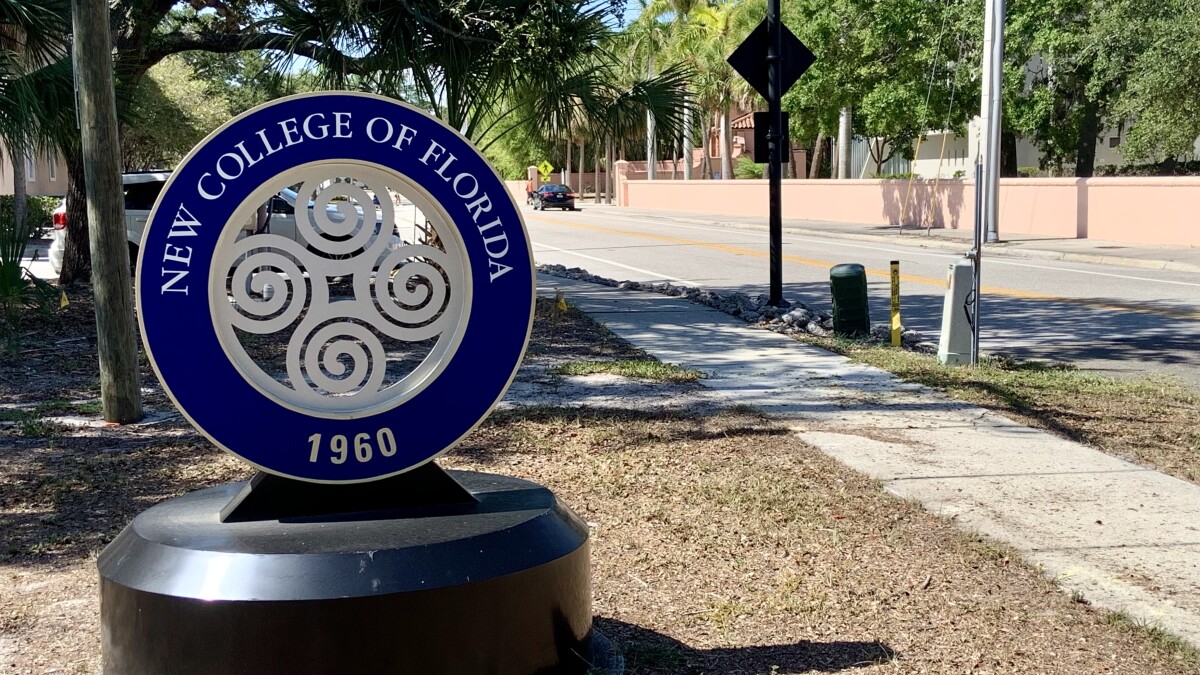Data is only as honest as the people who interpret it. Currently, critics are weaponizing a single spreadsheet, with no interest in truth or context. The DOGE report is being waved around by critics who want a headline, not an understanding. The DOGE report claims New College’s cost-per-student is far higher than that of the other 11 state universities. Still, critics are seizing on that single figure without acknowledging the simple truth: the underlying numbers compare apples to oranges. Less than three years ago (January 2023), New College wasn’t struggling; it was in a death spiral. The Legislature’s own reports showed almost $80 million in deferred maintenance. This left us with hundreds of dorm rooms and key facilities unusable and taken off-line, failing HVAC systems, and black mold. Three historic mansions were in ruins. Enrollment had cratered. The school’s spirit, once nationally recognized for rigor and intellectual independence, had become so dysfunctional that it was described as “toxic.” Then Gov. Ron DeSantis made a bold decision: appoint a new Board to rescue the state’s honors college. And we did. In less than three years, enrollment jumped from just over 600 to more than 900, and we are on track to reach our 1, 200-student benchmark by 2028. The New College Foundation grew from $39 million to $53 million. We became the first college in America to voluntarily eliminate DEI, without a mandate. For the first time in decades, deferred maintenance is under control. Yet critics point to the DOGE report and claim our budget is “too high.” Here’s why that conclusion is not only wrong, but wildly misleading. Deferred maintenance blows the numbers out of reality. Critics waving around the DOGE report never mention the most consequential fact: all but $10 million of the funding New College received in the last three years was non-recurring money used to repair decades of catastrophic neglect we inherited. We weren’t replacing lightbulbs. We were rebuilding a campus that had been allowed to decay, flood-damaged dorms, leaking roofs, broken HVAC systems, and black mold that shut down 300 beds and forced students into hotels. Three historic mansions were in ruin, and the grounds had deteriorated into dead grass and sand. We fixed all of it, not because it was optional, but because student safety demanded it. For the first time in decades, deferred maintenance is back to routine levels. Treating these one-time capital repairs as “operating cost-per-student” isn’t just sloppy; it’s dishonest. As Ben Watkins told the Board of Governors, New College has been in a turnaround, practically a startup phase. Remove the non-recurring dollars and the numbers fall into place: our per-student cost drops from $83,207 to $58,784, our cost per degree fell nearly 30%, and New College becomes one of the lowest-cost top liberal arts institutions in America. That’s the truth critics hope you never see. Growth requires investment. Always. Any leader who has ever built, scaled, or even observed a successful organization knows the basic rule: growth comes first, efficiencies follow. New College is in the middle of an unprecedented growth surge in modern higher education, on pace to double enrollment in five years. That is a once-in-a-generation expansion. And, as with any growth phase, investment is required upfront. Once we reach the business-plan target of 1, 200 students, our cost per student and cost per degree will fall by another 45%. That’s not bureaucracy; that’s responsible, intentional expansion. We are building for the future and doing it faster than anyone predicted. Florida law requires New College to be a residential college. This is the structural reality critics pretend doesn’t exist. New College is the only institution in the State University System legally required to operate as a residential liberal arts college. Nearly 80% of our students live on campus. At UF, it’s 25%. At UCF, just 12%. Our operating budget must support housing, dining, infrastructure, and residential services for eight out of every ten students, not one or two. That mandate alone changes the financial landscape. It is not optional. Any honest comparison must acknowledge it. Graduation and employment metrics are inherited, not created. Every single graduation rate, employment statistic, and degree yield in the DOGE report reflects students admitted years before the January 2023 turnaround. In other words, the data critics are attacking us with what is attributable entirely to the old New College. The revitalized institution’s outcomes cannot be reasonably measured until 2028, when our first fully recruited cohort reaches graduation. To judge the new leadership on the outcomes of students recruited under the old one is not analysis; it’s a political tactic. “Cost per credit hour” is not a measure of educational excellence. DOGE reduces efficiency to a simplistic equation: total credit hours divided by full-time faculty. If that truly were the standard, then the state could shutter every campus tomorrow, move everything online, and call it a victory for efficiency. But that would be a demolition of education, not an improvement. We learned during COVID what genuine educators already knew: face-to-face instruction is superior; small classes produce stronger outcomes; and residential colleges build better citizens. Efficiency without efficacy is a hollow metric. And New College is surging on measures that actually matter quality, demand, growth, and momentum. There is also tangible public value in being the institution that voluntarily eliminated DEI, ended gender-studies degrees, and signed the national compact defending free speech and civil discourse. These aren’t spreadsheets, they’re standards. Scale makes comparisons meaningless. New College is intentionally small. By design, by statute, and by mission, we will never exceed roughly 1, 800 students. Meanwhile, SUS institutions range from 1, 770 students to nearly 70, 000. Of course, their cost-per-student numbers are lower. They benefit from massive economies of scale that we are not meant to replicate. But scale cuts both ways. If we insisted on comparing everything “per-student,” we could claim to have the most successful endowment in Florida. Our $53 million endowment (one of the smallest in the system) appears to be the largest per student at $57,797. It’s an absurd distortion, and policymakers would laugh at anyone who used it seriously. That is the same distortion at play in the cost-per-student arguments being made about New College. Yet when measured per student, our endowment is the highest in the state, at $57,797. This is obviously not a helpful way for policymakers and education leaders to consider this metric, just as overreliance on per-student costs distorts New College’s value and mission more generally. A final, inconvenient truth A decade ago, New College was spending three times more per degree at $79,250 than the SUS average, and no one cared. No national outrage. No op-eds. No “crisis” narratives. Many of the same voices shouting today were begging the Legislature to give the college even more money back then. So why is there a sudden uproar now, when the revitalization is working? Because the answer is obvious. We are succeeding. We are ahead of schedule on every major benchmark in our BOG-approved plan. We have restored enrollment, rebuilt the campus, transformed the culture, and revived the mission. And we are doing it boldly, transparently, and without apology. New College is no longer the failing school critics once ignored. It is the model they fear because it proves that courage, conviction, and higher expectations still work in American higher education. We are just getting started. Our charge is unmistakable: to make New College of Florida the number one public liberal arts college in America. We have the plan. We have momentum. We have the resolve. The old New College is gone. The new New College is rising. The people trying hardest to tear it down are the ones who understand that we are succeeding. ___.
https://floridapolitics.com/archives/766051-richard-corcoran-new-college-critics-are-misreading-the-data-heres-the-truth/
Richard Corcoran: New College critics are misreading the data — here’s the truth



